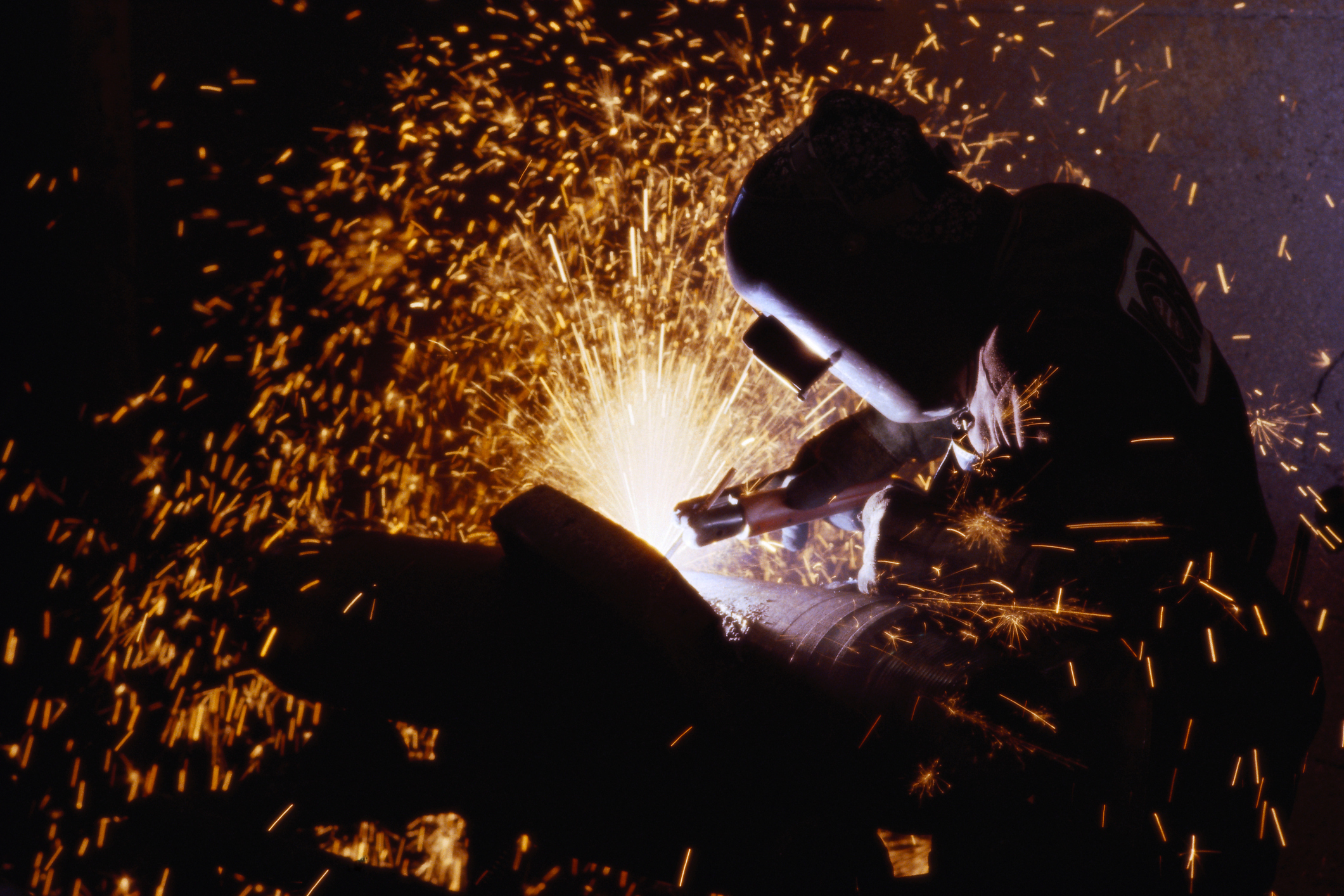Mysteries of the Labor Force

What the future of labor in America looks like.
One of the enduring mysteries of contemporary society centers on the seeming disassociation of so much of the labor force from the economy. This became particularly evident during the pandemic, when checks arrived regularly to people who used to work. And even this year, several states, including California, have sent payments to cover inflationary pressures.
Yet even as some employers raise wages and job counts have surged, many workers are still staying on the sidelines. One problem is that inflation has risen faster than incomes, obviating the higher pay. This is occurring when, despite well publicized layoffs in tech and finance, other sectors like retail stores, restaurants, and factories are consistently shortly staffed.
Managers fret about a decline in a “go-getting” attitude, with employees unwilling to work weekends and extra hours. Many also point to habits and attitudes cultivated by the education system, which increasingly deemphasizes hard work and diligence in favor of indoctrination and “safety,” comments New York University professor Jonathan Haidt. “When you look at Americans born after 1995,” Haidt observes, “what you find is that they have extraordinarily high rates of anxiety, depression, self-harm, suicide, and fragility.”
Many Causes
There are many explanations here, and each, to some extent, makes sense. Alienation of labor, as Marx described it, has risen as people conclude that “grinding” doesn’t pay off. In America, a country where hard work has long been celebrated, barely half of Democratic Party members believe that such efforts offer commensurate rewards. Among some young people around the world—even in China—there is a reluctance to embrace hard work and a desire to “lay flat” as they essentially avoid the congestion and stresses of urban life. There are good reasons to be discouraged. In the United States, long known as the land of opportunity, the chance of middle-class earners moving to the top rungs of the earnings ladder has dropped by approximately 20 percent since the early 1980s.
For many, college education was long seen as the certified path to success. But no longer.
There’s a surplus of college degrees, often devalued by easy grading and a proliferation of trendy “gut” glasses. Half of all BAs work at jobs such as baristas that do not require an expensive four-year degree. The continued decline of unions, particularly in the private sector, has weakened the appeal of employment by stripping away job protections, health, and pension benefits.
Over recent decades, many jobs that could support families have disappeared; according to one UK account, self-employment and gig work generally do not provide sustenance for anything like a middle-class lifestyle. Most new opportunities tend to be low wage service work. Some reluctance may be linked to concerns, not at all unfounded, that many jobs will be eliminated by automation, impacting as many as 90 million American workers.
Men are the worst affected. If we include labor force dropouts, AEI scholar Nick Eberstadt suggests, the unemployment rate for men is at “Depression era” levels, as measured by lack of participation. The number of men earning no income has risen from 6 percent in the mid-sixties to 16 percent today, a phenomenon largely ignored by the mass media.
Indeed, the economic prospects of women, as Brookings Institution economist Richard Reeves notes, have risen at the same time those of men have declined. The gender wage gap, he suggests, has diminished markedly as women ascend to higher skilled, higher paid jobs. In contrast, boys and men, Reeves says, are “left behind,” plagued by psychological disorders, lack of friends, and drug addiction and have been increasingly sidelined from the economy.
Critical global demographic shifts—not only in America—also play a role through declining fertility rates and a shrinking supply of labor, particularly as legal immigration has fallen. The proportion of the U.S. population aged between 16 and 64 grew 21 percent during the eighties; during the 2010s, it grew by less than 5 percent. The EU and East Asia are suffering even stronger declines in their working-age populations and, in Europe at least, working fewer hours in order to keep more people at least partially employed.
Discouraged Workers
The current economic recovery, if that’s what it is, reinforces all these trends. Most of the new jobs created over the past year have been low paid services jobs. This has been the case in recent years—nearly half of all American workers now receive low wages—which may prove a critical untold story behind the current “labor shortage.” The recent impressive job growth numbers were predominately in lower wage service professions, particularly in fields like restaurants and hospitality which suffered most in the pandemic and are now recovering. Almost two-thirds of all new jobs over the last three months were in low-wage services.
This amounts to subsistence living for singles, and maybe two working adults, but not for a family of four, particularly in expensive places like California where high costs, rents, and regressive taxes make low wages particularly nasty. Hanging out on their parents’ couches immersed in the emergent metaverse may be more appealing than having to show up to work.
This has political implications for the viability of free markets. A strong majority of people in 28 countries around the world, according to a recent Edelman survey, believe capitalism does more harm than good. More than four in five adults worry about job loss, most particularly from automation. The notion of a “post-work” world also fits the green de-growth philosophy—ratcheting down consumption among the masses, reducing the size of homes, and limiting mobility and heating and cooling—all pushed by powerful corporations and their green allies.
Skills Mismatch
Part of the problem lies in the mismatch of skills and what the market needs. We have fewer of what we need—skilled laborers, medical workers, technicians—and too many who simply have no clear economic niche. Much of the problem lies with a mismatch between needed skills and what is being learned at school and pushed by school counselors. Ned Hill, professor at The Ohio State University’s John Glenn College of Public Affairs, blames schools for pushing students into four-year programs with little practical use, as younger generations have avoided anything connected with manual skills.
But America’s employers are not generally looking for art history majors, much less for graduates of proliferating grievance studies departments. The real opportunity lies in such fields as medicine, manufacturing, logistics, and home-building, precisely where labor shortages are most acute and potential opportunities abound. “We have to prepare for the silver tsunami,” suggests Hill, pointing out that the manufacturing workforce over the age of 55 has doubled in the last 10 years to 20 percent of active workers. Nearly 50 percent of active workers are above the age of 45.
By late 2021, nearly one million manufacturing jobs were left unfilled. Even as automation removes some routine tasks, as many as 600,000 new manufacturing jobs are nevertheless expected to be generated in the U.S. this decade. There’s already a major shortage of welders, now 240,000, which could grow to 340,000 by 2024.
In contrast, many service, and even tech jobs, may be more threatened by the growing reach of artificial intelligence. In Japan, where labor shortages are particularly intense, there are elaborate plans to use robots to take care of their aging population. Artificial life forms are seen as companions for alienated youth—as in Ishiguro’s brilliant Klara and the Sun—as opposed to expanded parental care or employing migrants from labor surplus countries. Even prostitution could conceivably be dominated by artificial life forms.
AI may be most brutal to computer programmers and similarly situated professionals. CEOs and top technologists may survive the robotic tsunami, but many ordinary tech and service jobs, now suffering widespread layoffs, could find their skills duplicated by new AI programs. Automation of information could prove lethal to “coders” and “symbolic analysts,” while people who do jobs maintaining and operating machinery could have a surprisingly bright future. “It’s the end of the white-collar knowledge work,” venture capitalist and AI entrepreneur Rony Abovitz suggests. He predicts that the coming years will be shaped more by the rise of the “sophisticated, technically capable blue-collar worker.”
Skills Training or an Ever-expanding Welfare State
Despite these realities, President Biden and politicians of both parties often talk about having factory workers and oil riggers “learn to code.” But in the real world, demand is for medical personnel, drivers, machine tool operators, and welders. Some states and regions, looking particularly at European models, have adopted this new approach. In Louisville, a major center for transporting goods, the local Chamber of Commerce has shifted its focus from attracting hipster college graduates to people whose labor is needed in a place where living costs allow blue collar workers a decent quality of life. “You can have a good life here in our community without a degree,” suggests Sarah Davasher-Wisdom, CEO of the regional Chamber.
This shift to basic skills means changing the priorities of the education establishment. “We have told young people that you essentially have two choices in life,” said Diane Auer Jones, now vice president at the Career Education Corp., either get a four-year degree or face a life “on Skid Row.” Even among those who manage to finish, more than 40 percent of recent graduates are underemployed, meaning that they’re working in jobs that don’t require their degree, the Federal Reserve Bank of New York reports.
Clearly college is not the best choice for many, if not most, younger people. Indeed when nonwage benefits are counted, manufacturing workers earn 13 percent more in hourly compensation than others in the private sector and pay more than most college-track jobs. This could fit in well with efforts—aided by the rise of such technologies as 3-D printing—to move production back home. Groups like America Makes are already training a 3-D workforce that can localize manufacturing and train workers and companies to learn the new skills.
Welfare or a Revival of Work?
Ultimately, we will need to choose to embrace upskilling America’s workforce as part of increased re-shoring or accept the notion of an ever more expansive welfare state. Already, roughly half of all Americans support the idea of a guaranteed basic income of about $2,000 a month if robots put them out of work. A universal basic income enjoys even stronger support in most European countries, particularly among younger people.
The welfarist approach, of course, is widely supported on the Left. The proposed Green New Deal, as Senator Joe Manchin among others pointed out, supports income subsidies even for able bodied people who simply can’t be bothered to get a job. Equally important, this no-work gambit is also widely embraced by many tech oligarchs—Mark Zuckerberg, Elon Musk, Travis Kalanick (former head of Uber), and Sam Altman (founder of Y Combinator).
These billionaires may be celebrated as visionary, but their worldview seems more in line with a feudalistic attitude about the “lower” classes. Having interviewed 147 digital company founders, Gregory Ferenstein notes that they generally don’t expect their workers or consumers to achieve more independence by starting their own companies or even owning houses. Most believe that an “increasingly greater share of economic wealth will be generated by a smaller slice of very talented or original people. Everyone else will come to subsist on some combination of part-time entrepreneurial ’gig work’ and government aid.” And even this niche is now under assault by new Biden Administration policies.
Yet unlike the “Penthouse Bolsheviks” of the 1930s, the oligarchs have no intention of allowing their own fortunes to be squeezed. Instead, the still existing middle class would likely foot much of the bill for guaranteed wages, health care, free college, and housing assistance, along with subsidies for gig workers, who generally do not receive benefits from their employers. Some on the Left, not unreasonably, see the UBI as inadequate to maintain a decent quality of life. Some envision a future where tech and Wall Street wealth is confiscated to fund “fully automated luxury communism”—a leisure society paid for by Apple and its counterparts.
Ultimately society will have to make a choice. We could follow the Roman model where slavery, rather than robots, replaced plebian citizens, who were transformed into servile consumers of “bread and circuses.” Or we can honor work first and foremost perhaps by focusing on skills, as opposed to often meaningless academic credentials, lowering taxes on those with modest incomes, and providing supports for working parents in the form of daycare.
This kind of socialism, as some libertarian hard-liners may see it, would allow for greater domestic production and more opportunities for the next generation. Whatever you want to call it, we need a future where human labor is well regarded, nurtured, and mentored, as opposed to being the exclusive reserve of an enlightened few.
The American Mind presents a range of perspectives. Views are writers’ own and do not necessarily represent those of The Claremont Institute.
The American Mind is a publication of the Claremont Institute, a non-profit 501(c)(3) organization, dedicated to restoring the principles of the American Founding to their rightful, preeminent authority in our national life. Interested in supporting our work? Gifts to the Claremont Institute are tax-deductible.
Conservatives have to get smarter about sexual politics.
It’s time to reassert the authority of we the people.
A generation grows tired of the tiresome
A core socialist program is the latest attack on financial stability and the American work ethic.
Our perception of skilled trades needs to change.






